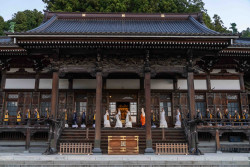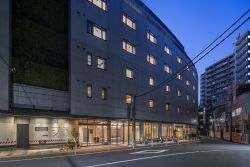
April 12, 2012
Cézanne: Paris and Provence
A town-and-country look at the “father of modern painting”
By Metropolis
Originally published on metropolis.co.jp on April 2012

Foreigners living in Tokyo probably know the feeling of living in a big, fancy metropolis with one’s roots back in the old country. While it might drive us to occasional sentimentality over an imported whisky, the feeling of never being quite at home and the contrast between “hometown” and “home” can be cerebrally stimulating. This is the thesis of this 90-work retrospective of post-Impressionist painter Paul Cézanne.
Cézanne is often referred to as the “father of modern painting” because his angular shapes and dense patch-like brushwork form a bridge between Impressionism and Cubism, generally regarded as the first modern painting style. The artist’s rejection of Paris in favor of relative isolation in his home region of Provence is usually presented as the foundation of his style. But this exhibition instead focuses on his frequent comings and goings between the southern region and the capital, and the role this might have played in his artistic evolution.
From 1861 to his death in 1906, Cézanne moved between Paris and Provence more than 20 times, staying for considerable periods in both, and maintaining constant contact with other artists. This shows in his work. While suffused with a strong sentimentality that stems from his emotional attachment to Provence, it also avoids provinciality with a strong analytical technique that focuses on shape, color, and composition rather than the emotional resonance of objects and scenery. At times, it almost seems as if the artist is trying to appear detached—which of course means he isn’t.
The degree to which this north-south axis provided the creative locus of Cézanne’s work may be debatable, but the interesting thesis at least gives this show something to bite against.
“Cézanne: Paris and Provence,” The National Art Centre, Tokyo, until Jun 11 (listing).







